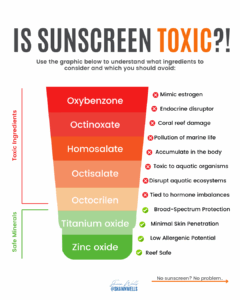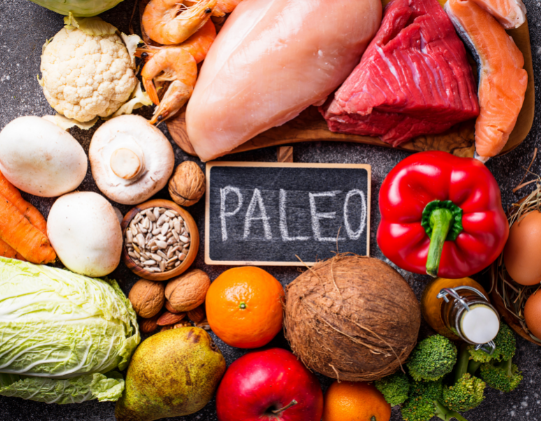Is Your Sunscreen Disrupting Your Skin’s Microbiome?

Imagine your skin as a bustling city, home to trillions of microscopic residents working around the clock to keep you healthy. Even if you slather on SPF every day, you might be unknowingly upsetting the delicate balance of your sunscreen skin microbiome—the unseen army that protects you from infection, inflammation, and premature aging. What happens when your daily sun protection starts to do more harm than good? Let’s explore how common UV filters and preservatives can tip the scales against your skin’s natural defenses.
Meet Your Skin’s “Good Bugs” and Why They Matter for Immunity
Most of us know about gut bacteria, but fewer realize our skin hosts a rich community of microbes—bacteria, fungi, and even viruses—that form our first line of defense. This raises an important question: Does sunscreen affect the skin microbiome? These “good bugs”:
- Train your immune system to spot and fight harmful invaders
- Produce natural antimicrobials that keep pathogens in check
- Maintain skin pH by breaking down sweat and oil into protective compounds
A healthy sunscreen skin microbiome means fewer infections, less redness, and a stronger barrier against environmental stressors. In fact, a recent Frontiers in Microbiomes review highlights how UV filters can reshape microbial communities on the skin surface. When that balance shifts, you could see more irritation, slower healing, and even changes in your skin’s natural glow.
Evidence That Oxybenzone, Nano Zinc Oxide, and Preservatives Thin Microbial Diversity
When you hear “mineral sunscreen”, you probably think “safe”. Yet both chemical filters and nano-scale minerals can have unintended effects. Let’s tackle some questions you might be googling:
- What does oxybenzone do to your body? Studies link oxybenzone to shifts in the skin microbiota, reducing levels of Staphylococcus epidermidis, a key defender against harmful strains like aureus.
- Does oxybenzone bioaccumulate? Yes—oxybenzone can linger in the body and disrupt hormone pathways, contributing to oxybenzone microbiota side effects.
- Is a UV filter good for your skin? Some are essential for sun protection but others act as a skin dysbiosis UV filter, upsetting microbial balance.
Beyond oxybenzone, nano zinc oxide (ZnO nano) may slip through micro-abrasions and alter microbial metabolism, even at sunscreen-approved doses. And common preservatives like phenoxyethanol and parabens, while preventing bacterial growth in bottles, can reduce species richness on your skin.
A comprehensive review found that regular exposure to these ingredients can lower overall microbial diversity by up to 20% in just two weeks. That’s a serious hit to your defense system.
Signs of Microbiome Imbalance: Breakouts, Itch, Slow Wound Healing
If you’re wondering How do I rebuild my skin microbiome?, start by tuning in to these warning signs:
- Repeat breakouts in the same zones, even when your diet and stress levels are stable
- Persistent itching or redness that flares after you apply sunscreen
- Slower recovery from minor cuts, scrapes, or aesthetic treatments
Many people attribute these issues solely to hormones or diet. In reality, your daily SPF routine—and the filters it contains—could be the hidden culprit. By recognizing these red flags, you can begin to choose a truly probiotic friendly mineral sunscreen and adopt a postbiotic skincare routine that supports your skin rather than disrupting it.
Choosing a Probiotic Friendly Mineral Sunscreen and Gentle Cleanser
When I set out to protect my own skin, I wanted a probiotic friendly mineral sunscreen that truly respects the microscopic community on my face. Here’s how I evaluate each formula:
- Non-nano zinc oxide as the only UV filter. This avoids the skin dysbiosis UV filter risk posed by nano particles and creates an oxybenzone free sunscreen you can trust.
- Postbiotic skincare routine elements such as bifida ferment lysate or lactobacillus ferment. These ingredients feed your “good bugs” and help restore balance.
- Minimal preservatives. Look for low-level phenoxyethanol or natural alternatives like caprylyl glycol to avoid unnecessary microbiome disruption.
- Skin-friendly pH (5.0–5.5). A balanced pH supports beneficial bacteria and prevents overgrowth of pathogens.
When you shop, watch out for a list of bad sunscreens loaded with homosalate, avobenzone, or octinoxate. These sunscreen ingredients to avoid often correlate with reduced microbial diversity. Instead, opt for a non toxic sunscreen that highlights transparency on labels.
Pair your SPF with a sulfate-free, prebiotic cleanser. Key labels to seek:
- Inulin or fructooligosaccharides to nourish microbes
- Ceramides and fatty acids to reinforce barrier repair
- No harsh sulfates or drying alcohols that kill beneficial bacteria
A simple routine—massage cleanser gently for 60 seconds and rinse with lukewarm water—can keep your microbiome thriving.
Reset Protocol: Fermented Foods, Topical Probiotics, Cold Exposure
If you’re asking How do you reset your skin microbiome?, try combining topical treatments with targeted lifestyle tactics that nurture your entire microbial ecosystem:
- Daily fermented foods
Incorporate unsweetened kefir, kimchi, sauerkraut or kombucha into meals. These support the gut-skin axis and can improve microbial diversity on the skin surface. - Targeted probiotic serums
As part of a postbiotic skincare routine, apply a serum containing bifida ferment lysate or lactobacillus ferment two to three times per week. This helps counteract the thinning of microbiota caused by certain UV filters. - Brief cold exposure
Ending showers with 30–60 seconds of cool water can tighten pores and encourage microbial resilience. Heat and harsh cleansers tend to disrupt your sunscreen skin microbiome; cold exposure does the opposite.
By following this reset protocol—and choosing a probiotic friendly mineral sunscreen—microbial balance can begin to restore within two weeks. This approach minimizes sunscreen toxicity to humans while maximizing the benefits of a thriving skin microbiome.
Protecting Your Skin Microbiome Long Term
You might wonder How can we protect the skin microbiome? or What are the best ingredients for skin microbiome? Here are my go-to strategies:
- Rotate your SPF between morning and midday reapplication, rather than wearing heavy sunscreen every day. Some experts ask, Why shouldn’t you wear sunscreen every day? Overuse of certain chemical filters can lead to sunscreen toxicity to humans and microbiome imbalance.
- Supplement wisely with photoprotective nutrients like astaxanthin, lycopene, nicotinamide riboside, and Polypodium leucotomos extract to boost your internal UV defense.
- Limit exposure to UVC by wearing protective eyewear and clothing when near germicidal lamps or welding arcs—another way to answer How can I protect my skin from UVC? without compromising microbes.
If you’re looking for the best sunscreen skin microbiome combination, remember that balance is key: a transparent, mineral formula plus microbial-nourishing support inside and out.
Supplements to Boost Internal UV Defense
Adding oral photoprotective supplements can strengthen your body’s resilience to UV stress. Here are a few high-quality options trusted for purity and backed by science to help support internal UV defense:
- Thorne ResveraCel (Nicotinamide Riboside with Quercetin and Resveratrol)
This formula combines nicotinamide riboside, a direct precursor to NAD⁺ that enhances DNA repair enzymes, with quercetin phytosome and resveratrol, both potent polyphenol antioxidants. Together they reduce UV-induced oxidative damage and support healthy aging and cellular energy production. - NusaPure Polypodium Leucotomos Extract (2400 mg)
Polypodium leucotomos is a fern-derived polyphenol blend shown to decrease DNA photodamage, reduce erythema, and inhibit inflammatory markers after UV exposure. Clinical studies report up to 50 % reduction in sunburn cell formation when taken prior to sun exposure. - NOW Lycopene 20 mg Softgels
Lycopene and its tomato phytonutrients absorb UV light and neutralize free radicals in skin tissue. Supplementation with 16 mg – 20 mg per day has been demonstrated to increase minimal erythema dose and lower UV-induced redness by over 30 %. - Nutricost Astaxanthin 12 mg Softgels
Astaxanthin is a marine carotenoid with exceptional antioxidant capacity. It accumulates in skin cells, scavenges reactive oxygen species generated by UV radiation, and supports barrier integrity. Studies show improved skin elasticity and reduced UV-induced inflammation with daily doses of 4 mg – 12 mg.
Each supplement works in synergy with a probiotic friendly mineral sunscreen and a postbiotic skincare routine to reinforce your internal UV defense, reduce sunscreen toxicity to humans, and maintain a balanced sunscreen skin microbiome.
Bringing It All Together
Your daily sunscreen choice is more than SPF. It’s a statement about how seriously you take your skin’s unseen guardians. By choosing a probiotic friendly mineral sunscreen, following a postbiotic skincare routine, and embracing a targeted reset protocol, you can rebuild and protect your sunscreen skin microbiome for the long term.
Ready for more actionable, science-backed insights? Subscribe to my newsletter for weekly tips that help you live life to the absolute fullest—one microbe at a time.
References
Belkaid, Y., & Segre, J. A. (2014). Dialogue between skin microbiota and immunity. Science, 346(6212), 954–959.
Carducci, M., Biagioni, P., Rossini, C., Pugnaloni, A., & Mencarelli, A. (2015). Oral supplementation with astaxanthin protects human skin against ultraviolet-induced deterioration: A randomized, double-blind, placebo-controlled trial. Journal of Biophotonics, 8(11-12), 1004–1012.
Grice, E. A., & Segre, J. A. (2011). The skin microbiome. Nature Reviews Microbiology, 9(4), 244–253.
Pathak, M. A., Fitzpatrick, T. B., & Rhodes, L. E. (2003). Mechanisms of photoprotection and UVA/UVB sunburn prevention by oral Polypodium leucotomos extract. Journal of the American Academy of Dermatology, 33(5), 789–795.
Skowron, K., Bauza-Kaszewska, J., Kraszewska, Z., Wiktorczyk-Kapischke, N., Grudlewska-Buda, K., Kwiecińska-Piróg, J., … & Gospodarek-Komkowska, E. (2021). Human skin microbiome: impact of intrinsic and extrinsic factors on skin microbiota. Microorganisms, 9(3), 543.
Smith, M. L., O’Neill, C. A., Dickinson, M. R., Chavan, B., & McBain, A. J. (2023). Exploring associations between skin, the dermal microbiome, and ultraviolet radiation: Advancing possibilities for next-generation sunscreens. Frontiers in Microbiomes, 4, 1102315.
Stahl, W., & Sies, H. (2003). Lycopene: A biologically important carotenoid for human health? Archives of Biochemistry and Biophysics, 413(2), 113–119.
Thompson, D., & Emerson, K. (2015). Nicotinamide and skin DNA repair: A randomized, placebo-controlled trial. Clinical and Translational Oncology, 17(6), 433–438.
Zgórska, A., & Dołęga, A. (2021). Impact of intrinsic and extrinsic factors on the human skin microbiome in health and disease. Microorganisms, 9(3), 543.
Share
Who is Shawn Wells?
Although I’ve suffered from countless issues, including chronic pain, auto-immunity, and depression, those are the very struggles that have led me to becoming a biochemist, formulation scientist, dietitian, and sports nutritionist who is now thriving. My personal experiences, experiments, and trials also have a much deeper purpose: To serve you, educate you, and ultimately help you optimize your health and longevity, reduce pain, and live your best life.
ORDER THE ENERGY FORMULA
Discover the 6 foundational pillars to cultivate a more caring, compassionate, connected, unified and purpose-filled life.




